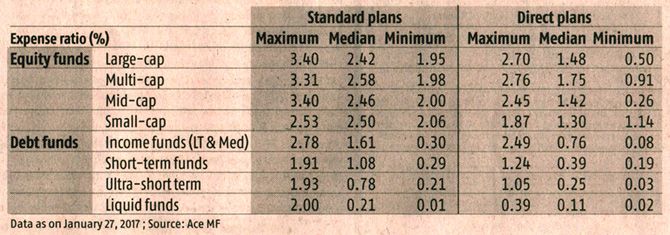While it may be justifiable to pay a higher expense ratio in a fund that outperforms, you should definitely exit one whose performance is below par while expenses are above the median, says Sanjay Kumar Singh.
Illustration: Dominic Xavier/Rediff.com

Cost tips
- Keeping an eye on expense ratio is important because money saved is money earned.
- Fund houses charge the expense ratio irrespective of performance, even in years when they give negative returns.
- It may be okay to pay a higher expense ratio in an equity fund that is an outperformer.
- But, in debt funds, where the returns are usually in single digit, a low expense ratio becomes crucial: You don't want a large percentage of your returns to be taken away by the expense ratio.
- Look at the median figures in the table for different categories. Usually, there are several funds in each category that have a good record. You will be better off going with one that charges you less than the median.
- The difference between the median expense ratios of standard and direct plans in equity funds is 0.83 to 1.04 percentage points. In the debt category, it is 10 to 85 basis points. Over the long term, it definitely pays to go direct for investors who don't need hand-holding.












